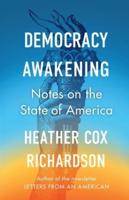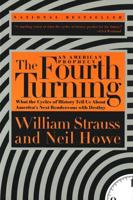Publisher's Synopsis
*Includes pictures of important people and places.
*Comprehensively analyzes the history of the abolitionist movement and the 19th century politics in America that brought about the Underground Railroad.
*Highlights famous individuals who helped the Underground Railroad, including Frederick Douglass and Harriet Tubman.
*Includes a bibliography for further reading.
The Underground Railroad is one of the most taught topics to young schoolchildren, and every American is familiar with the idea of fugitive slaves escaping to Canada and the North with the help of determined abolitionists and even former escaped slaves like Harriet Tubman. The secrecy involved in the Underground Railroad made it one of the most mysterious aspects of the mid-19th century in America, to the extent that claims spread that 100,000 slaves had escaped via the Underground Railroad. Of course, from a practical standpoint, the Underground Railroad had to remain covert not only for the sake of thousands of slaves, but for a small army of men and women of every race, religion and economic class who put themselves in peril on an ongoing basis throughout the first half of the 19th century, and in the years leading up to the war.
Over 150 years later, that same secrecy has helped the Underground Railroad become so romanticized and mythologized that people often visualize it in ways that were far different from reality. Before the American Civil War eliminated slavery, it was a fixture in North America for over 200 years, and by 1850 a trained slave was worth approximately $2,500, around 10 times the sum of a typical annual salary in that day. As a result, the economic dependence on slavery in the South was an extreme one, and in the wake of the Fugitive Slave Act, black people in the North were under constant pressure to defend their "credentials" to bounty hunters and owners. Between the value of slaves in America, rising abolitionist sentiment at home and overseas, and political debates promoting or hindering the movement toward equality, the era in which the Underground Railroad operated cannot be easily fit into a concise body of principles, actions or geography.
Hilary Russell may have put it best in saying of the Underground Railroad that while "a powerful and centralized system may not have existed but in legend, localized networks did." Communication standards over long distances being what they were in that century, she is most likely correct. The Underground Railroad was neither a true railroad nor underground, and it was not a route but a network comprised of a widespread conspiracy and social rebellion against present law. For the most part, people working on the Underground Railroad tried to protect themselves by not knowing the full details of the routes they were working on; instead, many people just played individual parts for the greater good.
The Underground Railroad: The History and Legacy of America's Abolitionist Network comprehensively examines the history of the Underground Railroad, explaining how it operated and who worked for it, as well as the political history that made it necessary for escaped slaves. Along with pictures of important people, places, and events, you will learn about the Underground Railroad like never before, in no time at all.








